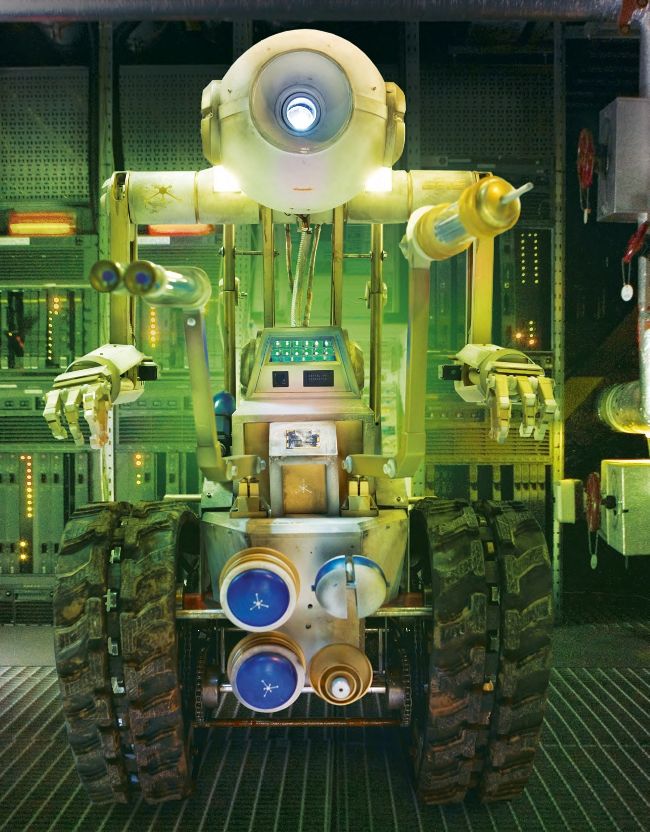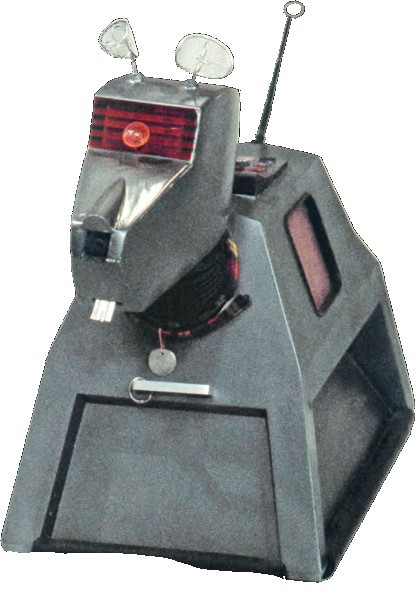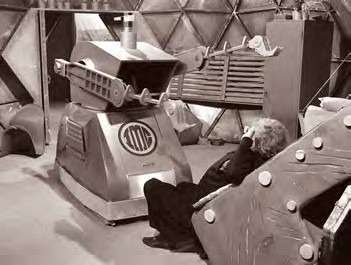ROBOTS, ANDROIDS AND CYBORCS
From Autons and Emojibots to Quarks and Vocs, the robots of Doctor Who go by many names and come in many sizes. Almost all of them, however, pose a threat to mankind…
FEATURE BY CHRIS BENTLEY

Gadget from The Waters of Mars (2009).

The original version of K9 was introduced in The Invisible Enemy (1977).

An IMC robot attacks the Doctor (Jon Pertwee) in Colony in Space (1971).

One of the cleaning robots that patrol the streets of Paradise Towers (1987).
“I hate funny robots,” says the Doctor in The Waters of Mars (2009) when confronted with Gadget, the resident servo robot at Bowie Base One. Adapted from worker drones, Gadget was designed for exploratory functions and is operated using auto-glove response controls. The robot has a spherical head attached to a shoulder bar fitted with jointed arms, lending it a humanoid aspect, albeit one mounted on caterpillar tracks rather than legs. It’s also programmed with a quirky vocal response – “Gadget-gadget” – which its designer, junior technician Roman Groom, finds amusing.
Later, the Doctor qualifies his antipathy by explaining to Roman that it’s not robots per se that he hates, but humans who dress them up and give them funny voices, effectively diminishing them. Responding to the Doctor’s criticism, Roman recalls a friend who made her domestic robot look like a dog. “Ah, well,” says the Doctor. “Dogs – that’s different.”
Funny robots were all the rage between 1977 and 1981 when the Doctor was accompanied on screen by his own robot dog, the much-loved K9. In the wake of Star Wars (1977), almost every science-fiction television series showcased its own funny robot: Mo in Space Sentinels (UK broadcast 1978-79), 7-Zark-7 in Battle of the Planets (1979-85), Muffit in Battlestar Galactica (1980-81) and Twiki in Buck Rogers in the 25th Century (1980-81), among others. Unlike his contemporaries, though, K9 didn’t owe his existence to the popularity of Star Wars droids R2-D2 and C-3PO, having been conceived – and his introductory adventure both written and recorded – before Star Wars had even opened in US cinemas.
As seen in his debut appearance in The Invisible Enemy Part Two (1977), K9 was invented by Professor Marius at the Bi-Al Foundation on asteroid K4067. Designed to act as the Professor’s own personal data bank, the dog-shaped robot computer has a striped collar, scanning dishes for ears and a tail aerial. He describes himself as an automaton and claims to have no emotion circuits, although he does possess memory, awareness and motivational circuits. His nose conceals an extendable photon beam gun with four levels of intensity and he also has self-regeneration systems which render him temporarily non-functional.